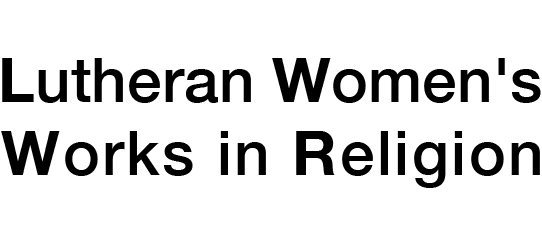Category: Church History and Historical Theology
BOOKS
Kirsi Stjerna Reading Christian Theology in the Protestant Tradition., In Stjerna: Sixteenth Century Christiantity. eds. Kelly M. Kapic and Melanie Webb. T&T Clark, ForthcomingA textbook, introducing central theological texts and their significance for/in the Reformations.
A textbook, with introductions and notes to Luther‘s texts, in light of Luther‘s theological development, exegetical work, and Jewish history
ENCYCLOPEDIAS
Kari Kloos "Angels and Angel-like Beings: Medieval Times and Reformation Era" In Encyclopedia of the Bible and Its Reception. Berlin: Walter De Gruyter 2009An overview of medieval development of the theology of angels and of Reformation critiques.
An overview of the post-biblical development of the theology of angels in patristic Greek and Latin sources.
JOURNAL ARTICLES
Brenda Llewellyn Ihssen "St. Basil and St. Gregory’s Sermons against Usury: Credit Where Credit is Due" In Journal of Early Christian Studies. vol. 16, 2008Significant features in Gregory of Nyssa‘s sermon Contra usurarios indicate that the younger brother of St. Basil the Great did not merely imitate the latter‘s earlier contribution on the destructive and corrosive nature of usury. Gregory‘s homily has an internal integrity that sets it apart from Basil‘s Homilia in psalmum 14. Though they used common themes when writing about usury—theft, falsehood, anxiety, enslavement, heavenly usury, and the natural world—Basil and Gregory approached these themes differently, were inspired and influenced by different Scripture and philosophy, and had different motives.
This essay explores ways in which sources might demonstrate closer congruence than has previously been considered of the infamous iconoclast Emperor Leo and the theology of the iconoclasts to the iconodule position. Hagiographic, historical and legal sources are consulted to consider the context within which Leo‘s position will emerge; second, through analysis of select theological documents of both iconoclasts and iconodules—texts roughly contemporary with Leo‘s actions against icons—this essay addresses how structures held as ‗iconic‘ by the iconoclasts are understood within the theology of the iconodules in a manner similar to the iconoclasts, and concludes with a call for a reconsideration of the iconoclastic and heresiarch titles which Leo has borne, in addition to that of “emperor.”
This article considers the two ―Lives‖ of St. John the Almsgiver, a seventh-century Patriarch of Alexandria. Unlike the average life of a saint, St. John‘s two biographies are alarmingly tame, and normal elements of such literature—miracles, ascetic works, divine visions—are conspicuously absent. But careful attention to the largely-ignored Lives of St. John reveals that through the defense of doctrine and care for the poor, this bishop sought to transform the city of Alexandria and redeem it for an Empire balanced on the threshold of political and religious chaos.
Explores how early and medieval Christian authors defined female identity paradoxically, both identical to the male in spiritual dignity and inferior socially, ecclesially, and spiritually. The tension created by this paradox yielded both constructive and destructive results historically.
Examines how Augustine challenged ancient Christian claims that Christ appeared in the Old Testament theophanies of Genesis and Exodus, arguing that his developing Trinitarian theology reframed Christological exegesis.

